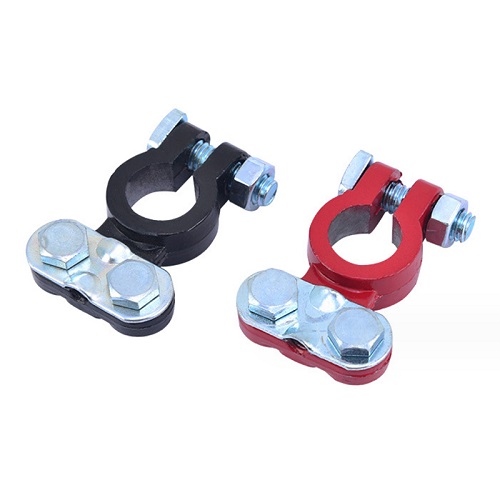 Car battery quick terminal is used to connect the car starting battery. The starting battery is mainly used to power the car starter and various electrical equipment when starting, generally lead-acid battery, voltage 12V.
Car battery quick terminal is used to connect the car starting battery. The starting battery is mainly used to power the car starter and various electrical equipment when starting, generally lead-acid battery, voltage 12V.
Our battery post terminal adopts one body die-casting molding, mainly brass, zinc alloy, aluminum alloy and other different materials to meet your needs for different materials.
Our adapted battery column mainly has three specifications; Large (inner diameter 17~19mm), medium (15~16mm), small (11~13mm).
Product model | Battery Terminal |
Applicable wire range | 16~35mm² |
Terminal range | 10~18mm |
Temperature range | -25~80℃ |
Maximum current | 480A |
Packaging & Shipp | |
Packaging | PE bag per pcs Customized packaging is available |
Carton size | 40cm*30cm*25 cm. Customized carton is available |
Shipping by air | 2-7days |
Shipping by vessel | 10-25days depend on the port of destination |
Logistics and transportation | sea transportation/air transportation/land transportation |
Payment method | TT |
Minimum order quantity | 200pcs |
Delivery time | 15~25D |
Supply capacity/month | 50000PCS |
A battery terminal is a crucial component of a vehicle's electrical system, connecting the battery to the rest of the vehicle's electrical components. Battery terminals are located at the ends of the battery cables and provide a point of connection between the battery and the electrical system of the vehicle.
Key features and information about battery terminals:
Material: Battery terminals are typically made of lead or lead alloys. Lead is chosen for its electrical conductivity and durability.
Types of Terminals:
Top-Post Terminals: These terminals are found on the top of the battery and are often used in standard automotive batteries.
Side-Post Terminals: These terminals are located on the side of the battery and are an alternative design to top-post terminals. They are commonly found in some vehicles.
Positive and Negative Terminals:
The positive terminal is usually marked with a "+" symbol and is connected to the positive side of the battery.
The negative terminal is usually marked with a "-" symbol and is connected to the negative side of the battery.
Terminal Clamps: Battery terminals are connected to the battery cables using terminal clamps. These clamps can be tightened to ensure a secure connection.
Corrosion Prevention: Corrosion can occur on battery terminals due to exposure to the elements and chemical reactions. Some terminals have coatings or features to minimize corrosion. Regular cleaning and maintenance are important to prevent corrosion issues.
Terminal Covers: Some batteries come with terminal covers or boots that can be used to protect the terminals from the environment and prevent accidental short circuits.
Compatibility: It's important to ensure that the battery terminals match the type and size of the battery. Different vehicles and batteries may have variations in terminal design.
Replacement: Over time, battery terminals can corrode or become damaged. In such cases, it may be necessary to replace the terminals or clean them thoroughly.
Proper maintenance of battery terminals is essential for the reliable operation of a vehicle's electrical system. Periodic inspection, cleaning, and tightening of terminals can help prevent issues such as starting problems and electrical malfunctions. When working with a vehicle's battery, it's important to follow safety precautions and disconnect the battery before performing any maintenance tasks.